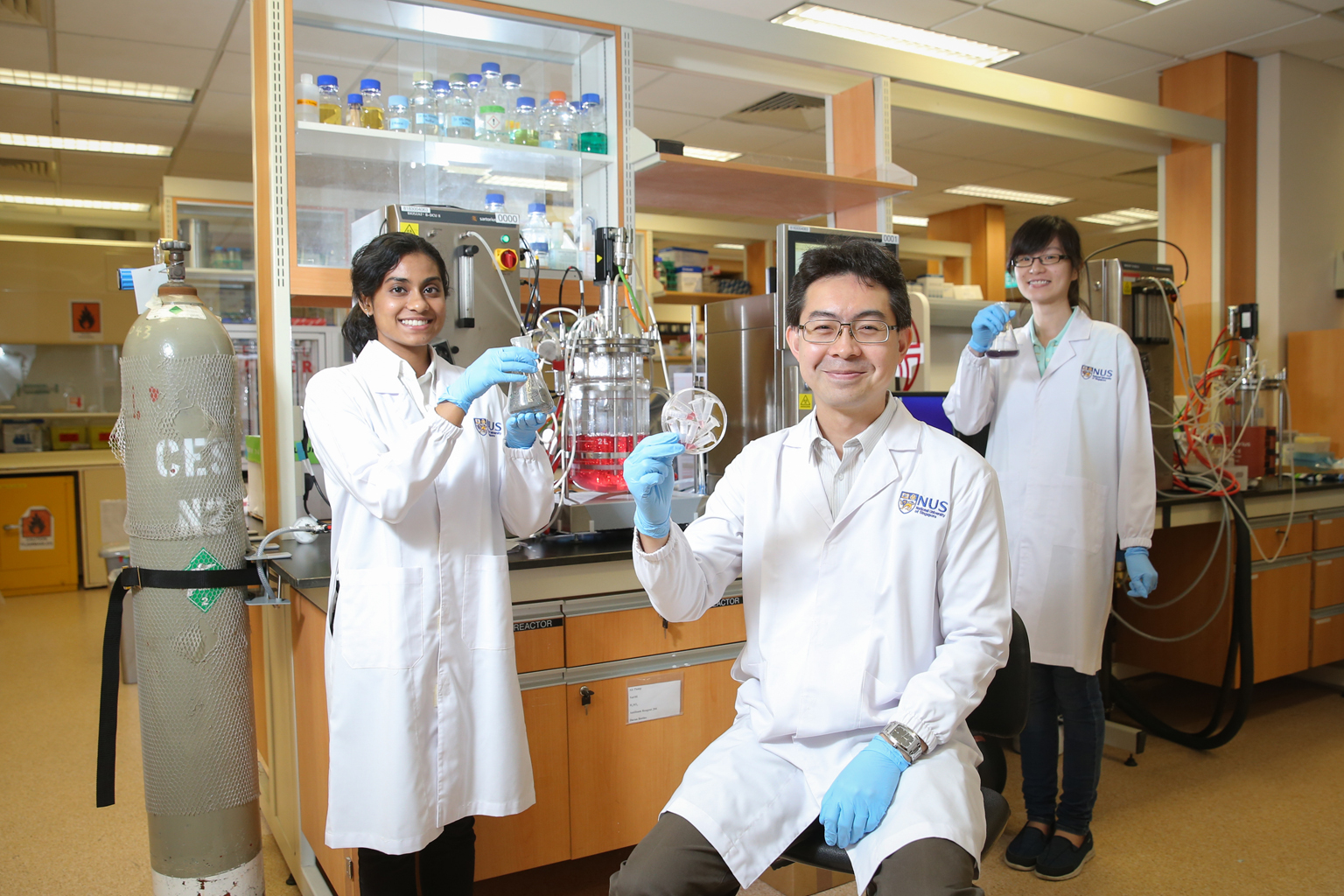Bacteria used to extract precious metals from e-waste in NUS study
Sign up now: Get ST's newsletters delivered to your inbox

Associate Professor Yew with (from left) students Rashmi Rajasabhai and Valerie Ling, part of an NUS team that re-engineered a bacterium to extract metals like gold from e-waste. It is working with local e-waste company Cimelia to fine-tune the technology and cut the cost of the method.
ST PHOTO: ONG WEE JIN
Samantha Boh
Follow topic:
A single-celled organism could end the use of harmful chemicals to extract precious metals from electronic waste (e-waste).
Scientists from the National University of Singapore (NUS) have re-engineered the Chromobacterium violaceum bacterium to give it the ability to create enzymes that can recycle metals such as gold, platinum and palladium from e-waste.
This means barrels of poisonous chemicals such as cyanide or concentrated acids - now often used to dissolve metals in e-waste before they are recovered through electrolysis - could one day be replaced with pools of this common soil bacterium.
When immersed in the bacteria, the metals are dissolved and then converted into solids without the need for electrolysis.
This method is safer and more environmentally sustainable, said Associate Professor Yew Wen Shan, who leads the NUS research.
Using the example of cyanide, which is often also used in gold mines to extract the precious metal, he said that, as it is highly poisonous, extra safety infrastructure is needed to prevent its fumes from escaping the facility.
It is also harder to scale up operations using such harmful chemicals as there are regulations that limit how much can be used.
"But, in the case of bacteria, you just need a little speck to grow an entire swimming pool full (of it)," said Prof Yew.
They can also stay effective for at least three months, compared to chemicals which lose their effectiveness after a few uses.
For a given volume of e-waste, the bacterial method takes a week, while chemicals do the job in an hour. But Prof Yew believes the benefits of the bacterial way outweigh this disadvantage.
His team of 17, comprising NUS and overseas scientists, as well as post-doctoral students, received about $2 million in grants that will be disbursed over five years, for the project that started three years ago.
The team is now working with local e-waste company Cimelia to test and fine-tune the technology.
At present, the team is trying to cut the cost of the method to match that of using chemicals.
If successful at Cimelia, Singapore will be the first in the world to use bacteria to recycle precious metals from e-waste at the industry level. Such methods have so far been confined to laboratories.
Prof Yew said he is confident it can happen within three years.
Cimelia's plant manager, Mr Nagendra H.R., said the firm - located in Tuas - considers its precious metal recovery system as "current and state-of-the-art". But, he added, it could be made more sustainable. He noted that the technology developed by NUS will revolutionise the e-waste recycling industry.
"We have every intention to use this new technology in our electronic waste recycling process upon the successful completion of the project," he said.
In an e-mail interview, Professor Paul Freemont from Imperial College London said natural organisms are used to leach metals from rock minerals, and the NUS study now shows for the first time that they can be adapted to leach metals from e-waste. The head of the section of structural biology at the university said: "The potential of this technology is huge worldwide, and this study represents another landmark in the developing field of synthetic biology."

